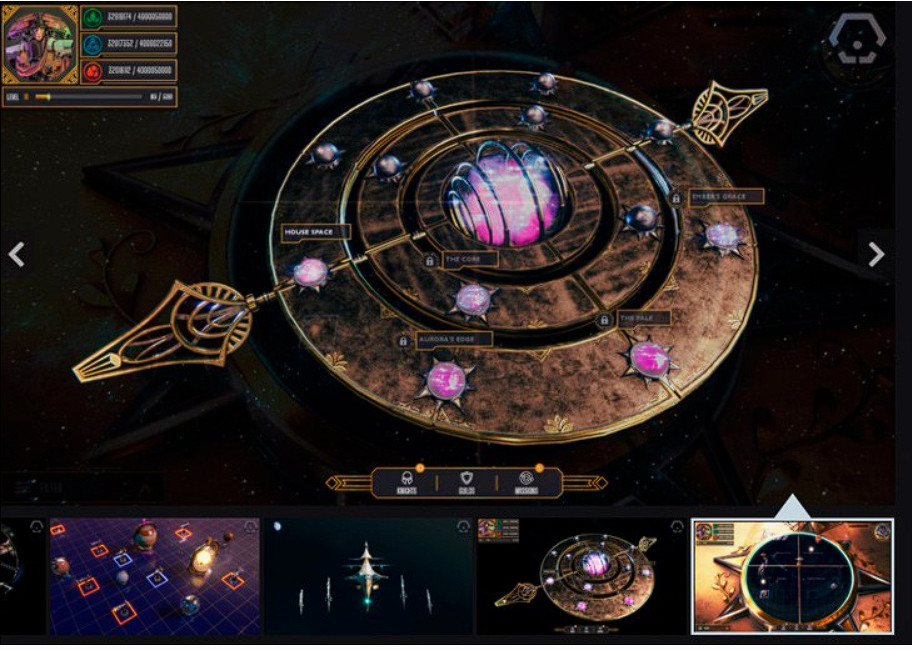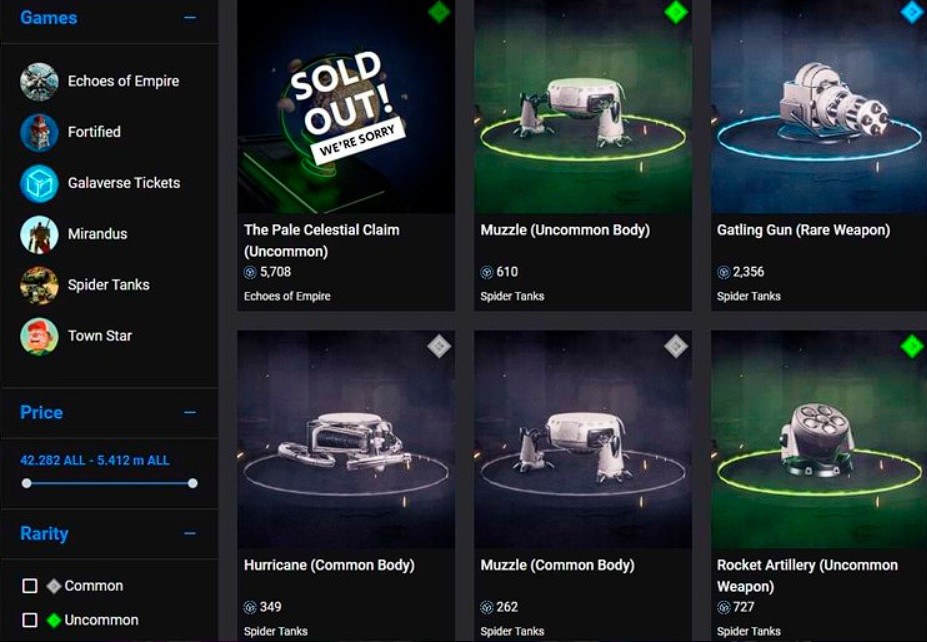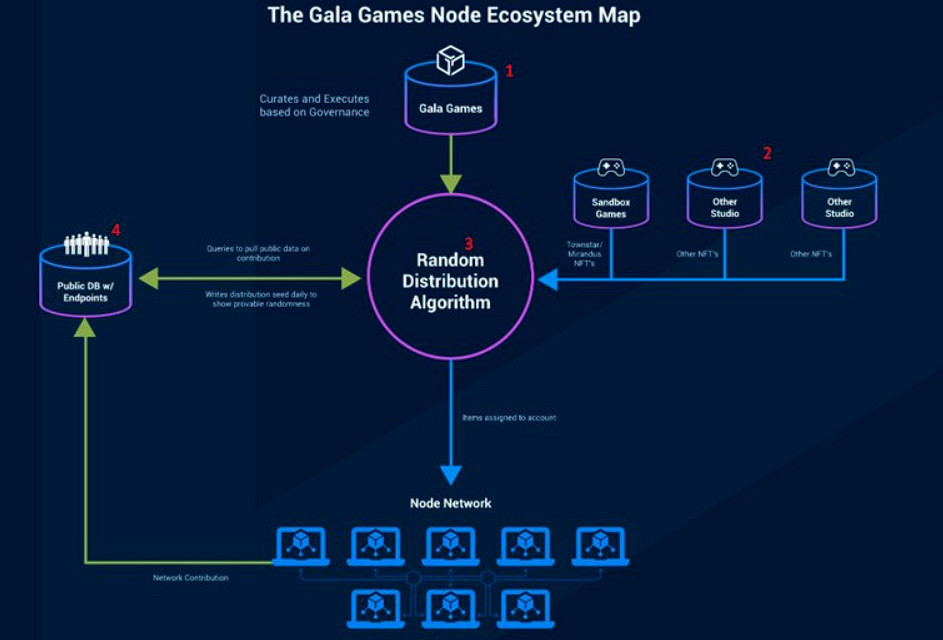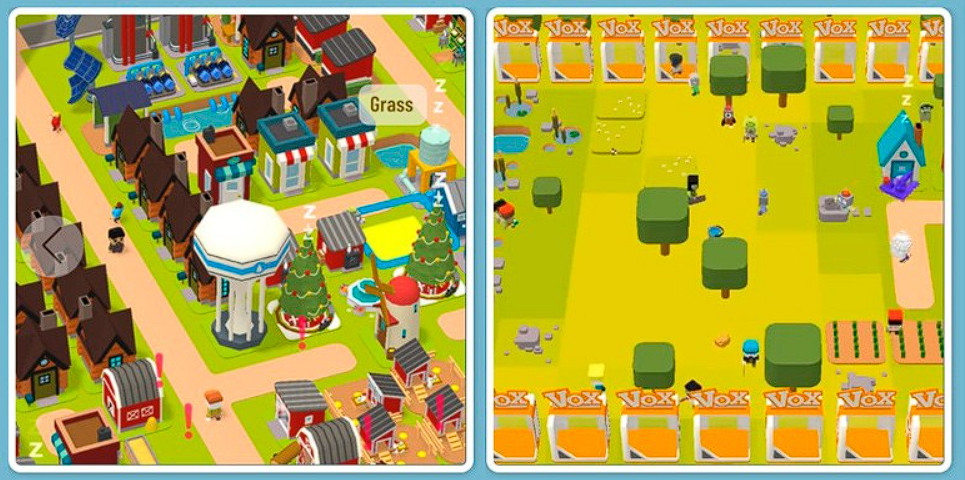Gala is transforming the blockchain gaming industry by empowering players with true ownership of in-game assets through decentralized technology. Utilizing NFTs, Gala not only enhances gamer involvement but also positions them as vital stakeholders within its ecosystem. This exploration highlights Gala’s innovative GalaChain technology and its rich gaming universe, including hits like Town Star and Mirandus, showcasing Gala’s potential to revolutionize digital gaming globally.
History of GALA cryptocurrency
The story of Gala cryptocurrency began in 2019 when Eric Schiermeyer, a co-founder of the major company Zynga, decided to start a new project. He founded Gala Games with ambitious goals: to empower individuals through gaming and return power to gamers. This means anyone can earn cryptocurrency and NFTs by completing missions and leveling up characters in various virtual universes. Importantly, all items and artifacts are owned by the gamer, not the developer studio.
The founding team included:
- Eric Schiermeyer: A legend in the gaming industry, whose company Zynga released the iconic game Farmville on Facebook and the online MMO Mafia Wars, which has over 19 million users.
- Wright Thurston: A blockchain expert who was among the first to start mining. He has been and remains the CEO of several major projects like Give Blockchain, Firstline Security, Elevate Inc., and holds dozens of patents related to distributed ledger technology.
- Michael McCarthy: Creative Director, who helped create the iconic online game Farmville 2, where users can open their own farm.
Initially focused on creating blockchain games and attracting partners from developer studios, the organization’s first project was TownStar, a farming blockchain game that quickly became one of the top NFT projects.
The team never conducted an initial coin offering (ICO) nor sold the Gala token directly to users. It was specified from the start that becoming a holder was possible through:
- Launching a node.
- Referring others to purchase node licenses, i.e., attracting referrals.
- Promoting the blockchain game to other users.
Features of cryptocurrency
Gala Games represents a vast ecosystem aimed at supporting gamers and blockchain game developers, rooted in the Play to Earn principle. Users who level up skills, complete quests, and fulfill tasks earn real profit in cryptocurrency and non-fungible tokens (NFTs), distinguishing it from similar projects by focusing not on blockchain, but on gaming and entertainment.

Key principles and features include:
- Decentralization is achieved with distributed ledger technology, ensuring that every NFT item is owned by its holder. This prevents developers from closing projects or deleting items arbitrarily, sparking high interest in the GameFi sector.
- The governance of the gaming universe is handed over to users. Enabled by nodes owned by participants, each owner can influence the project’s direction, including funding and game selection.
- The ecosystem is constantly evolving, with the potential to add numerous games across various genres on blockchains. Each game features NFT items, accessible across the Gala Games universe, promoting a unified economy.
What is Gala cryptocurrency in simple words
In simple terms, the Gala cryptocurrency ecosystem uses several types of tokens:
- ERC-721: Unique, indivisible Non-Fungible Tokens (NFTs) representing in-game blockchain items like lands and characters. Holding an item is owning an ERC-721 coin, a proof of content ownership.
- ERC-1155: A versatile Ethereum token standard for both NFTs and fungible tokens, allowing batch transactions. It’s used for gaming universe items, which can be traded in specialized marketplaces.

- GALA Token: An interchangeable utility token under the ERC-20 standard on the Ethereum blockchain, divisible to 8 decimal places. As developers work on GalaChain, all gaming tokens currently operate on Ethereum.
The utility coin is secured through cryptographic methods and integrated into the ecosystem, acting as «fuel» to support the project’s operation. It was created for community members to use a convenient and secure exchange and payment medium, purchase in-game items, and digital goods. Important legal aspects:
- The token is designed exclusively for use within the project’s universe.
- The coins do not represent shares or securities and do not confer ownership rights in Gala Games.
- The project makes no promises that holders will receive rewards, dividends, or investment income.
However, the tokens include a governance feature: holders can vote to include new NFT games in the Gala universe, incentivizing developers and studios looking to expand their audience.
Characteristics

- CoinMarketCap Ranking: #62
- Market Capitalization: $1,803,386,307
- Lowest Exchange Rate: $0.000151 on December 28, 2020
- Highest Price: $0.8367 on November 26, 2021
Principle of operation
Node functions adjust based on network demands, using an internal «swing» algorithm for adaptation. If there’s a surplus of storage but a need for computational power, node processing payments increase as an incentive.

Key components of the ecosystem are the founding organization, developer studios, a random distribution algorithm, and a public database.
- Gala Games: This organization curates and maintains the decentralized network, adding new games to the system, updating node software, developing technical solutions, and marketing.
- Developers: These studios add their games to the ecosystem, creating NFTs using SDKs and protocols developed by the founding organization. For content to be added, a majority of nodes must approve the studio’s project, after which it will receive a license and access to the ecosystem.
- Random Distribution Algorithm: Responsible for distributing rewards to nodes. As of December 2021, it is still under development. Initially, distribution will be random, but a more deliberate algorithm will be implemented later.
- Public Database: The developer community plans to regularly audit and analyze the ecosystem, with these data becoming publicly available and used for project development.
Distinctive features
The Gala project and its utility coin are distinguished by several key features:
- Primarily, it’s an expanding ecosystem aimed at uniting blockchain game developers, rather than just a network or a single company creating content for gamers.
- The project leverages blockchain, NFTs, and the Play to Earn principle.
- It operates on the Ethereum network, but development is also underway for its own chain to increase throughput and reduce fees.

- All tokens (both NFT and utility) follow the Ethereum standard (ERC), but developers aim to enhance cross-chain interaction, allowing coins to be used in other blockchains, such as Binance Smart Chain, through bridges.
- Holders have access to classic cryptocurrency earning methods (trading, investing, running a node) and more unique ones, such as completing in-game missions, winning prizes, and trading rare NFTs.
Provisioning
The utility tokens in this system aren’t backed by tangible assets like gold, precious metals, or fiat currencies, leading to high volatility in their value. However, the founding organization’s expertise and assets, along with the project’s ever-evolving ecosystem, serve as safeguards against depreciation. The project has partnerships with notable gaming industry names such as Frank Miller, Michael McCarthy, and Concept Art House, a leader in concept art. Moreover, there’s a growing number of studios eager to contribute their content.
In conclusion
Gala redefines blockchain gaming by emphasizing player sovereignty and NFT-based asset ownership. Through its GalaChain and games like Town Star and Mirandus, it showcases a future where gamers are central to the ecosystem’s success. As Gala expands, it sets a new standard for the integration of gaming and blockchain technology, highlighting a future where gaming is not only about playing but owning and earning as well.